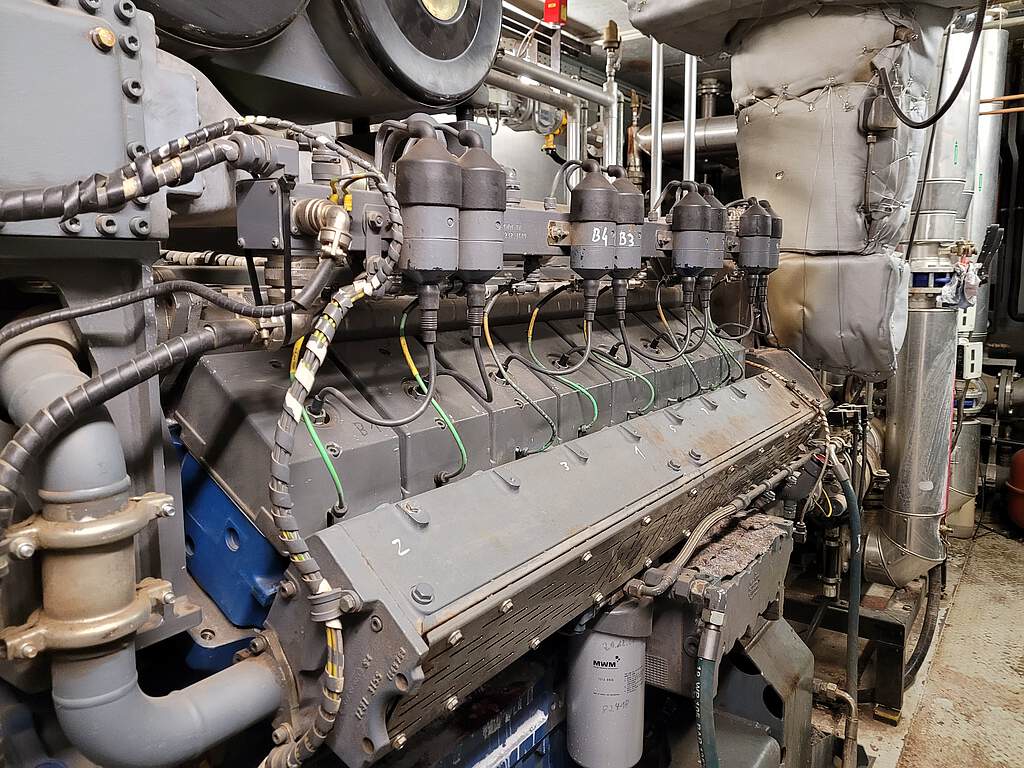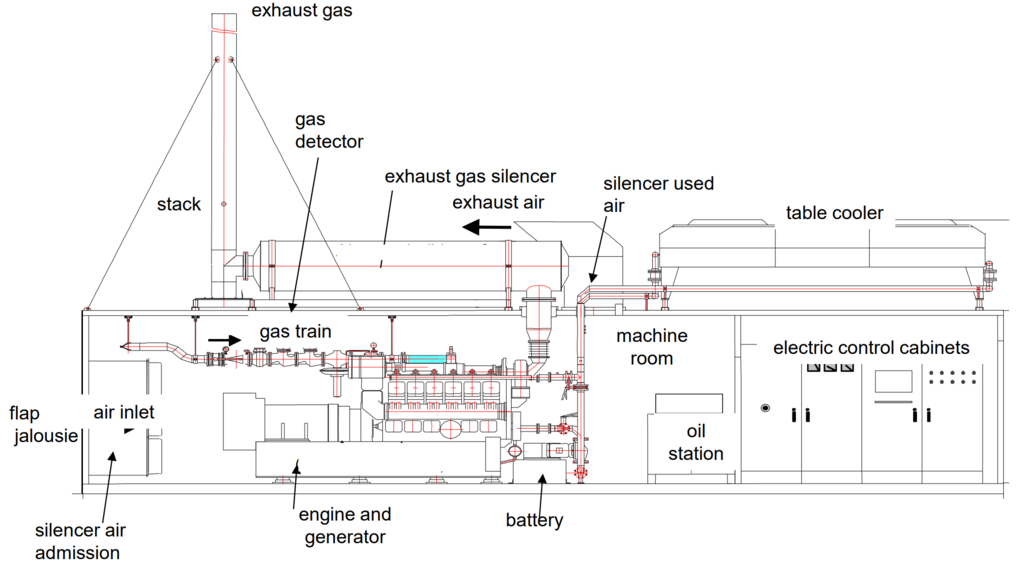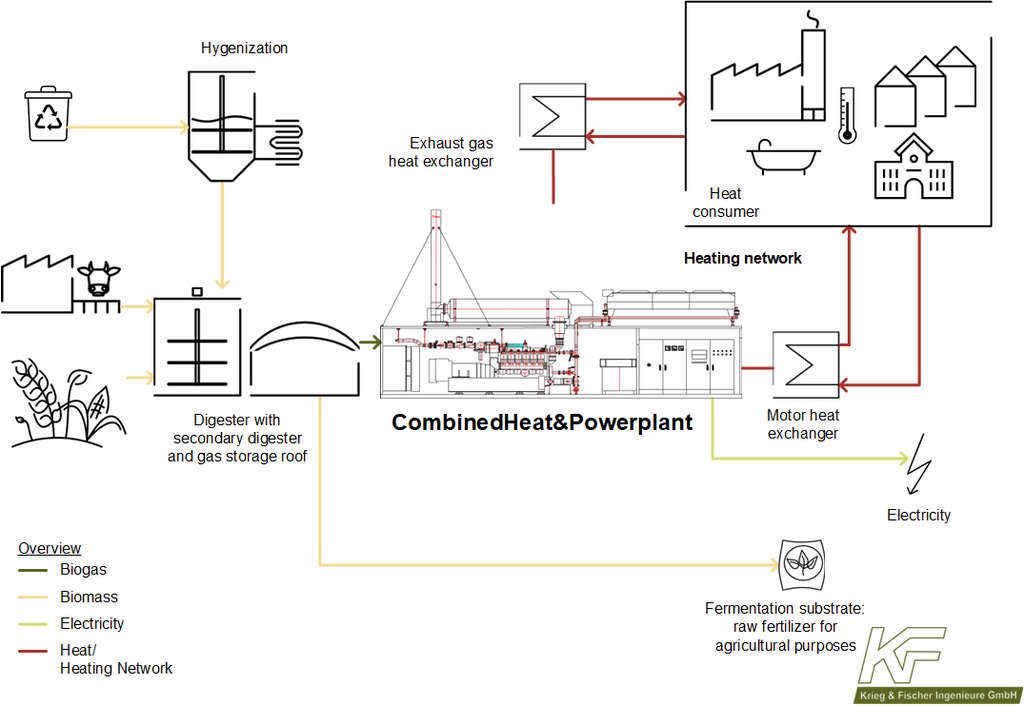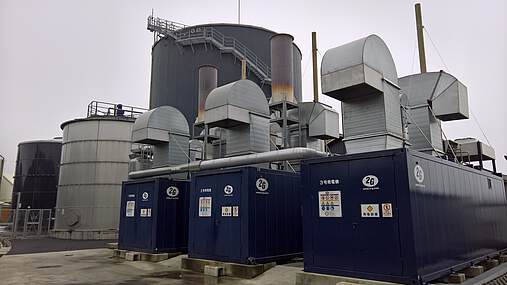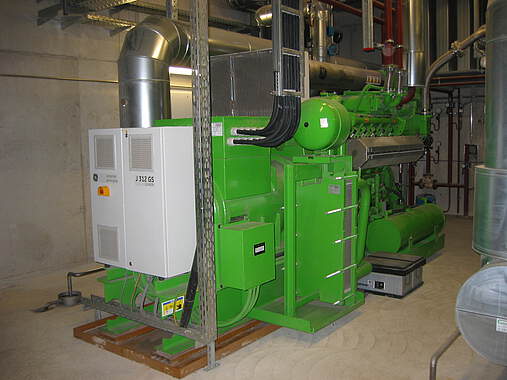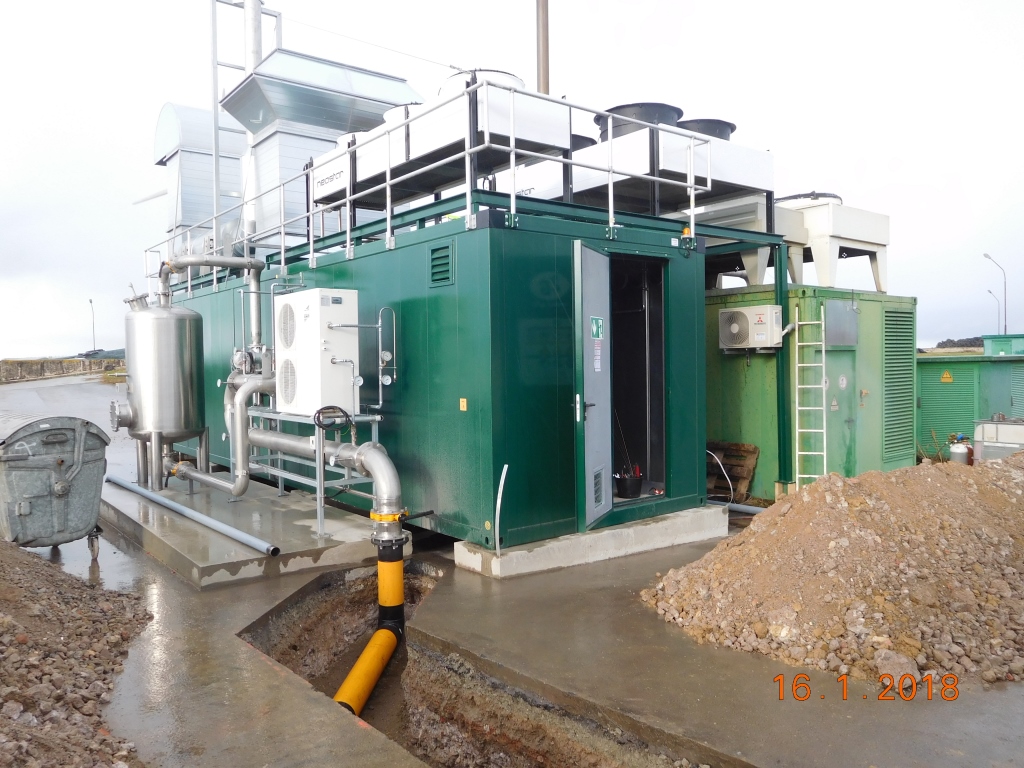Combined heat and power plants (CHP) work according to the principle of cogeneration. They generate electrical energy and usable heat simultaneously from a fuel, in this case biogas. This technology enables particularly efficient use of the primary energy used, as both the electricity and the waste heat generated are utilized. The use of the CHP waste heat increases the overall efficiency to up to 90 %, while gas and steam turbine power plants only achieve a value of up to 62 %, as heat extraction is often not realized.
The use of CHP plants to utilize biogas offers numerous advantages:
- high efficiency: Generation of electricity and heat in combined heat and power. Up to 85-90% of the energy used can be utilized (heat network).
- reduction of greenhouse gases: The use of biogas, which comes from renewable sources, contributes to the reduction of greenhouse gas emissions.
- independence from fossil fuels: Instead of importing fossil fuels, biogas generates energy regionally and can be used locally. Regional added value is generated. Biogas increases independence from global energy markets.
- decentralized energy supply and regional value creation: Biogas plants that generate energy in combined heat and power generation strengthen the energy independence of rural regions and contribute to the stabilization of the power grid. In addition, the added value remains in the region, as farmers, municipalities and local businesses are directly involved. This makes biogas CHP plants an important component of the sustainable, regional energy transition.
- CHP as a reserve power plant: Biogas can be stored and CHP units can react quickly. This means they can generate electricity flexibly and compensate for fluctuations in the grid. Another advantage is the decentralized structure (satellite CHP). Many biogas CHP plants distributed across the country increase the resilience of the energy system to outages and reduce the load on the electricity grids. Biogas plants are base-load capable.



